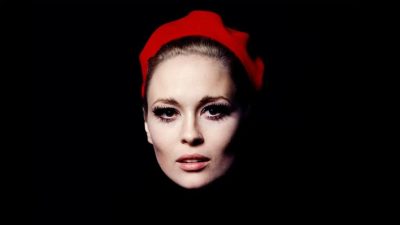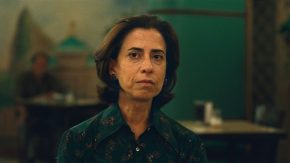This year’s Art Capital was a huge success, and right now it is followed by three spectacular programmes in Rome. Organizer Ferenczy Museum Center (FMC) comes to prestigious places like the Hungarian chapel of Saint Peter’s Basilica and the Palazzo Falconieri, a.k.a. the Hungarian Academy Rome, but they also spend a day in the bohemian quarter Trastevere. Reason for all this is the 51. birthday of the Freelight Exhibition Szentendre. An interview with director Gábor Gulyás.
On the 10th of September at 8 PM, there will be a Remembrance Mass in the Hungarian chapel of the Saint Peter’s Basilica for Ferenc Kucsera. He was 27 in 1919, involved in a counter-revolutionary movement, which made Communist soldiers to kill him during a fight on the spot at the Danube without any more interventions. He will be remembered at a place worthy of his memory. Organizers also meet Pope Francis and they bring him a numbered artwork by Lajos Vajda and a special comic drawn for the Remembrance Year of Kucsera.

We can expect a lot from FMC, but it is still a bit surprising to organize a Remembrance Mass. Is this a request of honor from someone towards your institution?
Anyone can request a mass – why wouldn’t a museum do? Of course, the context and the perspective is important in the case of such a gesture. In our relationship with the past, a lot is tribute – we had a remembrance event at Lajos Vajda’s grave, and I also gave a remembrance speech at Károly Ferenczy’s grave, both of them quite recently. Otherwise, we organize exhibitions every year which are related to important local events of history or extraordinary personalities. Such as the Silver Age last Spring, putting Jenő Dumsta, first mayor of Szentendre, in the spotlight. And so will be the exhibition on chapelain Ferenc Kucsera’s martyrdom, who was also a local. We’ve been planning this for a year already.

What can Romans expect from this event?
Well, it is no doubt that this event is important, first and foremost, for us Hungarians. I find it joyous that a Szentendre priest can celebrate a mass in the centre for the Catholic Church for the salvation of a Szentendre martyr who was seriously considered for beatification. This resonates well with the motivation we had when we created the exhibition on Kucsera.
Will there be a memorial event in Szentendre as well?
We already had a few, given the fact that 2019 is his official Remembrance Year. The museum contributes mostly with the exhibition, of course.
The other programme in Rome organized by FMC is an exhibition called March. Banned and tolerated art in Szentendre in the Kádár era in the Palazzo Falconeri, also called the Hungarian Academy Rome. It is about the artistic scene of Szentendre in the 1980s, an emblematic space and community of Hungarian counter-culture which still affects contemporary art. Co-organizers are the FMC and the Council of Szentendre.

Who are the artists presented here?
We have a long list of many different people, with the common feature that they are/were considered as Szentendre artists. From Lajos Vajda to Jenő Barcsay, from Margit Anna to Öcsi Zámbó… and all artworks come from the own collection of FMC.
Is it possible to make an exhibition organic in a 17th century baroque place, or is it a mere nice historical location?
The exhibition hall of the Hungarian Academy Rome is a legendary location for both modern and contemporary arts. In Spring 2017, when I organized the exhibition Silver Age, it was lovely to confront how much professionals were interested in the vernissage. I would be happy to see this again.
How long will the current exhibition be?
It will be there for a month.

Will there be a chance for Roman fans to meet the artists personally?
Some great artists will join us for the vernissage. The opening speech will be given by Ádám Farkas, Kossuth-prize-awarded sculptor, who has several works exhibited in the rooms.
And after the two September events, Romans will get a real specialty from us. During our 51th birthday celebration of the Freelight Exhibition Szentendre, there will be even more works by Szentendre artists showcasted in streets surrounding the Campo di Fiori, close to the Hungarian Academy. (This is the marketplace of Rome with a scultpure on the execution of Giordano Bruno which happened exactly here.) István (Öcsi) efZámbó and László (Laca) feLugossy were the initiators of that first freelight exhibition that featured four people. A huge audience saw it. They chose the place very wisely: on the wall of the Church Hill, there is an oblique light on the stones that affected the pictures very well. Their decision was one of the most important gestures of that era: showing a real perspective of liberty in a state party dictatorship that used “liberty” as a political slogan but abused its original meaning.
Who will be there in Rome from the founding fathers?
A lot of people, naturally including efZámbó and feLugossy. Almost everyone will join who attended the jubilee exhibition of last year.
Can everyone bring works, even Italian or other local artists?
Of course, just like it happened in Szentendre.

How will you inform Romans about this event?
We rely on the Hungarian Academy Rome. Its great leader who has been my collaborating partner in various former Italian-Hungarian art exhibitions, passionate about Hungarian culture, is guarantee enough. I think only a few people did as much for popularizing Hungarian art in Italy in the last one and a half centuries as István Puskás. And apart from that, we are part of a festival that is based upon the rich tradition Mirabilia Urbis Romae and involves contemporary art in it, so the festival itself will promote us as well.
It might be a one-street “party”, or something much bigger. What are you expecting?
A fun, liberated, exciting meeting of artistic worlds.
Will there be any political messages in the Italian context?
We don’t plan that. Locals might find Italian politics important, but we are interested in other things. Our main message is to show how free art can be, and thereby we let a tradition of Szentendre live and flourish which we are very, very proud of.
Interview: Enikő Nagy
Translation: Zsófia Hacsek



























Comments